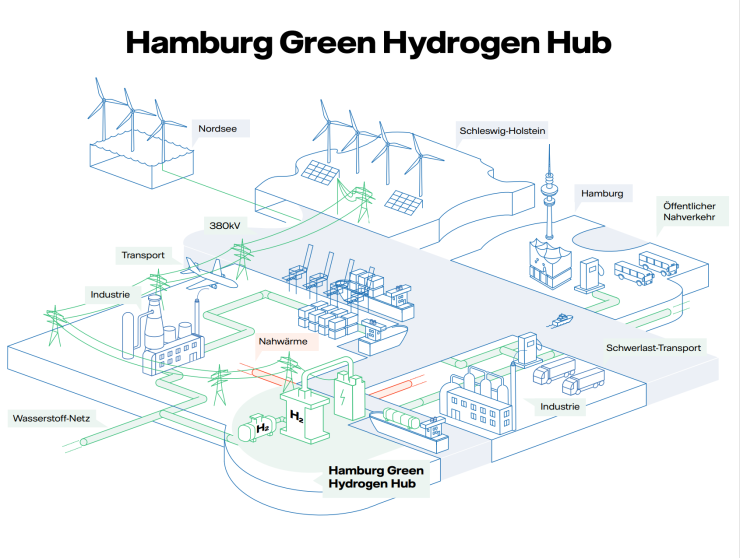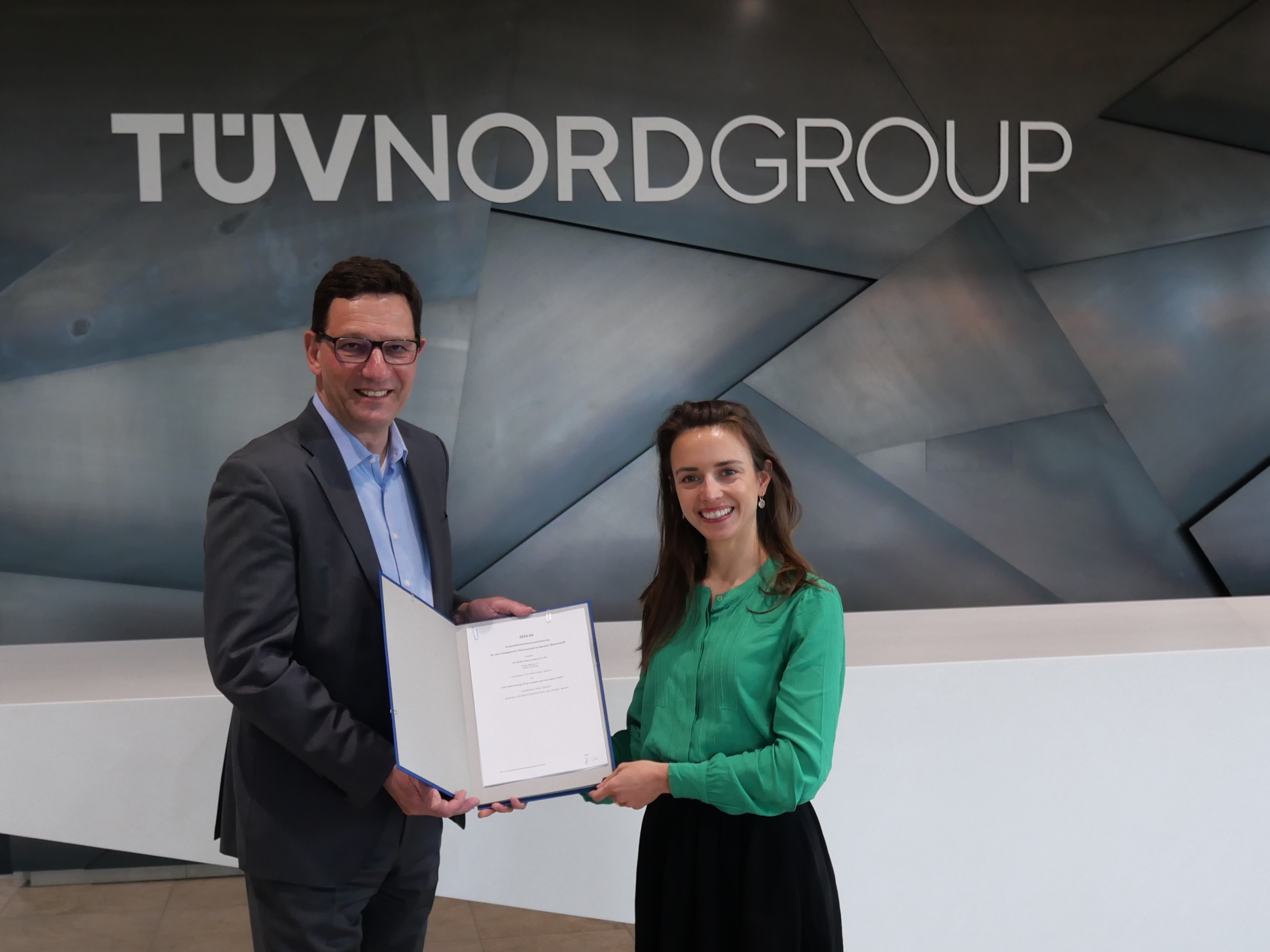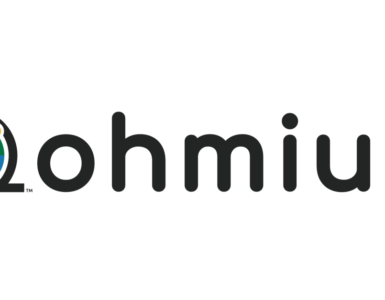Former coal plant site Moorburg in Hamburg could produce green hydrogen by 2026.
The feasibility study agreed in the coalition agreement for the conversion of the moorburg hard coal-fired power plant, which has since been shut down, has been completed.
The focus of the study, which was awarded under the auspices of the Authority for Economy and Innovation and in close cooperation with the Authority for the Environment, Climate, Energy and Agriculture, was on the development and evaluation of different concepts for the reuse of the site with the successive conversion to a CO2-neutral operation and the construction of a scalable electrolysis plant for the production of green hydrogen.
The study concludes that electrolysis for the production of green hydrogen at the Moorburg site with a capacity of up to 500 megawatts is economically and technically feasible. Parts of the existing power plant infrastructure offer excellent prerequisites for the realization of an electrolyser.
🔥 What about we co-host a webinar? Let's educate, captivate, and convert the hydrogen economy!
Hydrogen Central is the global go-to online magazine for the hydrogen economy, we can help you host impactful webinars that become a global reference on your topic and are an evergreen source of leads. Click here to request more details
This can be set up parallel to a partial power plant dismantling and then expanded. The possible timeline for commissioning the plant until 2026 as part of the funding process of the Important Projects of Common European Interest (IPCEI) is considered realistic.
In addition, possibilities examined in the study for the conversion of existing power plant parts, such as a biomass combined heat and power plant, a combined cycle power plant or a high-temperature storage system, are not considered useful by the Senate at the present time, taking into account the technical, economic and ecological conditions.
Michael Westhagemann, Senator for Economics and Innovation:
It is highly gratifying that even after a thorough examination of cost-effectiveness and technical feasibility, the starting signal can be given for the construction of a large and scalable electrolysis plant at the Moorburg site.
“This once again consolidates our support for the electrolysis consortium Hamburg Green Hydrogen Hub (HGHH) from Shell, Mitsubishi and Hamburger Energiewerke as well as Vattenfall as a strategic partner, which is planning the construction of an electrolyser with a scalable 100 MW capacity within the framework of IPCEI and will be funded by the federal government and FHH after approval by the EU.”
“This starting signal also heralds the conversion of the entire site to a new, green orientation, for which a holistic concept must now be developed. In doing so, we can draw on a large number of additional findings provided by the feasibility study.”
Michael Pollmann, State Councillor for the Environment, Climate, Energy and Agriculture:
The results of the study on the Moorburg site provide valuable insights into the classification of possible reuse.
“The test winner for us is therefore the electrolyser for the production of green hydrogen, which we urgently need for the rapid decarbonization of Hamburg’s industry and for compliance with our Hamburg climate targets. In the study, the electrolyser performs best both economically, technically and ecologically.”
“The variants shown for a biomass combined heat and power plant and for a combined cycle power plant, on the other hand, have considerable disadvantages.”
“We will now concentrate on the construction of the electrolyser in Moorburg as part of the IPCEI project HGHH and at the same time push ahead with the construction of the Hafen energy park in order to replace the old coal-fired power plant in Wedel in a climate-friendly manner as quickly as possible.”
“For Tiefstack, we are in an intensive dialogue and testing process in order to achieve the coal phase-out well before 2030.”
To further reuse possibilities of the location according to the study
As a possible option, the study considered the conversion of a power plant block to sustainable biomass and thus the future operation as a biomass cogeneration plant:
This variant could be technically implemented at the site; however, it is only economical if a district heating pipeline is implemented up to the Tiefstack site and the fuel can be secured in the long term, sustainably and in affordable and sufficient quantities. A decrease in the heat generated would be necessary for economic operation.
The authorities involved assess this as follows: The development of appropriate heat sinks, such as .B. with the connection to the Hamburg district heating network in the east of the city, would probably take far too long. In addition, the use of woody biomass as a fuel in the designed volume is considered to be very critical and not sustainable.
The site should therefore preferably be used for projects that are not necessarily dependent on a heat sink. In view of these hurdles, this option is not considered to make sense either technically, economically or ecologically.
The construction of a combined cycle power plant (CCGT) is another option for the Moorburg site. However, it requires an almost complete demolition of the existing coal-fired power plant and a subsequent new building. In general, the construction of such a combined cycle – esp. with a future option on the use of green hydrogen – represent a sensible reuse variant.
However, for reasons of economic efficiency, the secure purchase of the electricity generated and the development of sufficient heat sinks would also be necessary.
Highly flexible peak-load power plants are considered necessary by the authorities involved and the Federal Government for the safe operation of the power grid and are also desirable in the Hamburg area. Due to the low operating hours and the above-mentioned lack of heat sinks, economic operation is also not guaranteed.
Therefore, it is considered more expedient at this time to consider the option of setting up combined cycles at sites with existing infrastructure for the consumption of the heat generated, e.B. at the Dradenau or Tiefstack sites.
The implementation of a high-temperature storage system for the intermediate storage of power peaks with subsequent reconversion into electricity – as mentioned in the Hamburg coalition agreement – was also examined. Thanks for staying up to date with Hydrogen Central.
However, this does not make sense from a technical and economic point of view without a neighboring power plant operation.
With a highly flexible electrolyser, current load peaks can be stored in the form of hydrogen and reused regardless of the presence of a nearby power plant, so that the implementation of this concept makes the construction of a high-temperature storage system unnecessary.
The feasibility study for the conversion of the Moorburg power plant will be published in the Hamburg Transparency Portal.
Feasibility study for the conversion of the Moorburg power plant – starting signal for the construction of a large electrolysis plant, March 22, 2022








